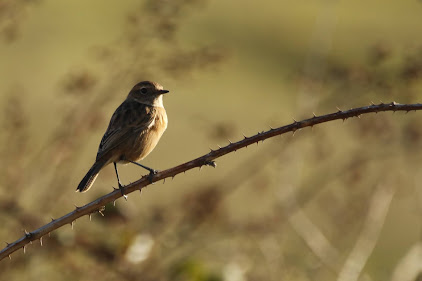With lockdown being enforced upon the country for a second time, the rush was on to get to Minsmere before the reserve was shut down, which it was the next day. I have to say Minsmere is my favourite reserve, and being kept away for Spring and most of Summer felt difficult, as it was for a lot of people kept away from their special place by the first lockdown. I need my birdwatching fix, its a spiritual thing unexplainable in its way, more than just a hobby.
The reserve was quiet, both for birds and with the still weather there was a hush on the land. There was a quietness from all the bushes and trees, an absence of birds from the land at the moment. It was a lovely sunny day, with the water so still it was like a mirror, creating reflections of the birds present on the Scrape.
The mild weather in the end proved to be the wrong type for attracting the birds in. In birdwatching, hard weather is needed to push birds in from Europe to the UK, because as difficult as it is to believe, the UK has milder weather than the continent. If the weather is too mild the birds stay in Europe, having to fly less distance from their breeding grounds. If the weather is hard in Europe, the birds flock here. This time of year can feel a bit like a lull, an inbetween time, a time after Autumn migration ends and a time before winter begins.
The Scrape was given the free reign for KONIK PONIES to graze the area. These are hardy beasts, not caring about wading through the shallow waters of the Scrape. Their grazing provides the best way of maintaining the area for wintering ducks, and eventually next year's waders, keeping the long grass down and creating lots of muddy little habitats with their hooves. Its a lot cheaper as a form of management, and easier than being worked on by man. These animals are very iconic, close to their wild, extinct ancestors as it is as possible to be, and very much part of the fauna as any bittern or marsh harrier.
The small birds are always interesting at this time of year, their energy is always delightful compared to the rather static and sleepy waterfowl on the Scrape. In the Stone Curlew Field, the area of acid grassland near North Marsh, there was a flock of 50 GOLDFINCH, which was harried by a SPARROWHAWK. The flock swirled with the hawk, as the bird attacked, often at times flying after the raptor, so it was difficult to tell who was chasing who. A pair of STONECHAT were in this area, whilst a further three were seen near the Sluice Bushes. There were two DARTFORD WARBLERS, one behind East Hide and one behind the Public Viewpoint, always perched on some bush, present long enough to entice me to get my camera out, but not long enough to stay as soon as I focused on to it. Finally there were a couple of BEARDED TITS in the reeds around the Konik Fields.






No comments:
Post a Comment